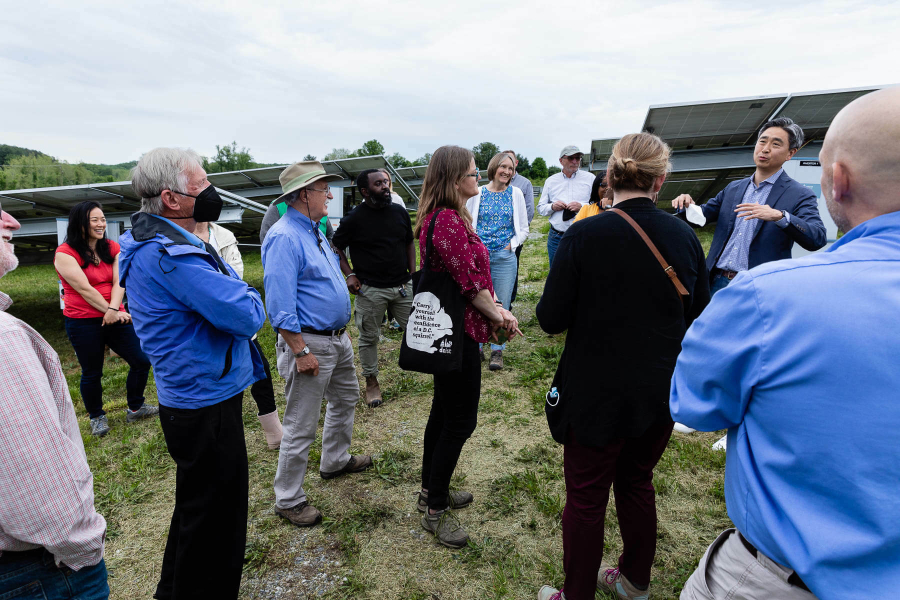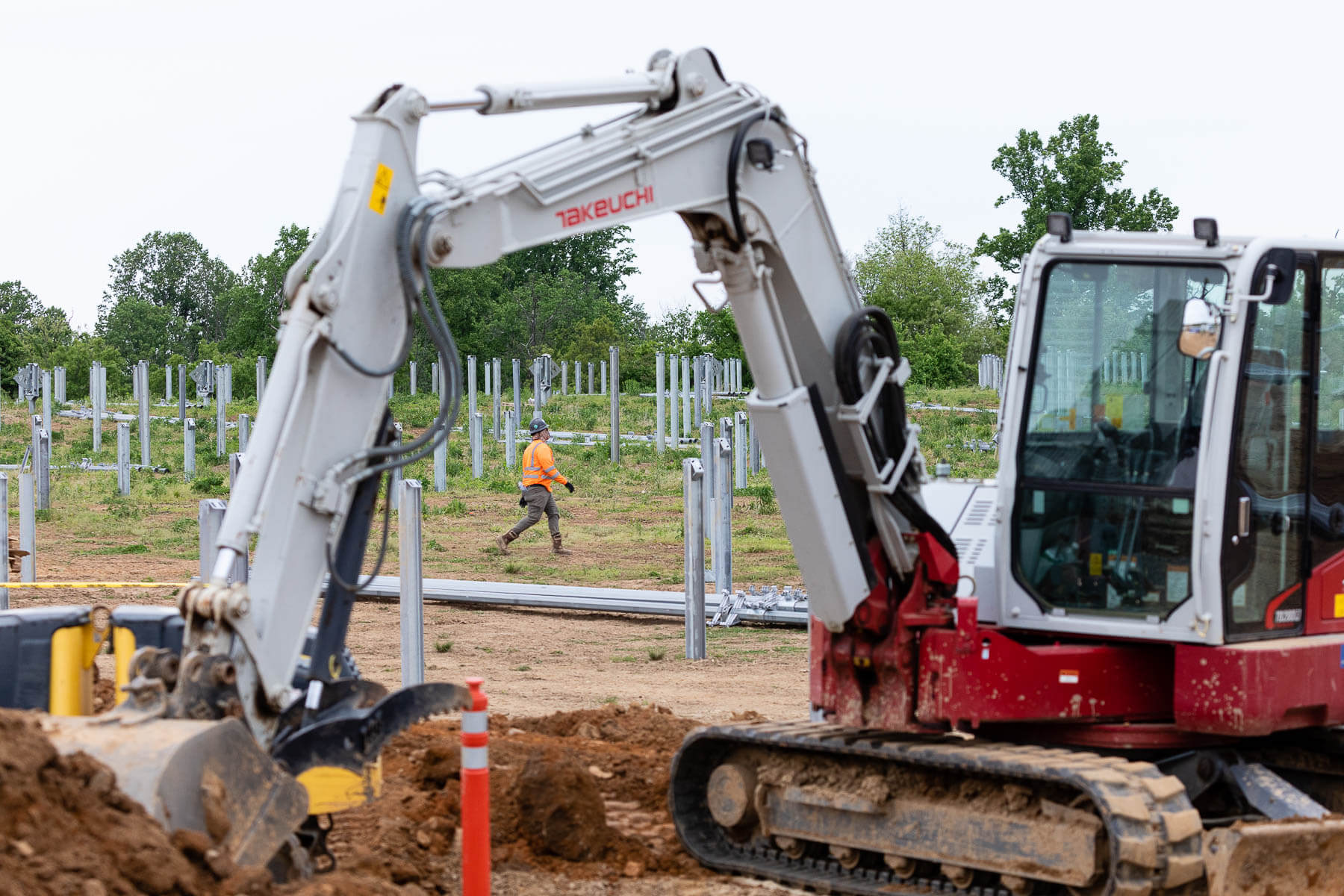Citizens Advisory Committee discusses a sunny future in the Chesapeake

On May 18th and 19th, 2022, the Chesapeake Bay Program’s Citizens Advisory Committee (CAC) held its quarterly meeting in Ellicott City, Maryland, to discuss large-scale solar development in the Chesapeake Bay watershed.
CAC is a group of volunteers representing communities and stakeholder from across the Chesapeake Bay watershed, that advises the leadership of the Chesapeake Bay Program on issues pertaining to members of the public. The committee meets quarterly, traveling across the region to learn and discuss different state or local priorities related to water quality, living resources and habitats, and community engagement.
With solar development predicted to quadruple in the next decade, CAC members met to discuss how solar farms help and hinder our ability to improve water quality. A three-part panel of professionals in research, government and industry was organized to brief CAC members on solar development challenges, progress and anticipated growth.
Dr. Peggy Kirk Hall, director at the Ohio State University Agricultural and Resource Law Center, shared highlights from a recent publication she co-authored that explores the implications of locating utility-scale solar facilities in agricultural areas. After identifying challenges faced by rural communities, she recommended the following best management practices:
- Protect prime agricultural soils,
- involve agricultural leaders in renewable energy decision making,
- plan via mapping,
- involve dual-use agricultural practices, and
- plan for the decommissioning of solar panels after their life cycle.

During the meeting, CAC members also discussed how state legislative and executive goals for clean energy are driving the development of solar energy in the watershed.
Aaron Berryhill, solar program manager at Virginia Energy and Melanie Davenport, director of water permitting at the Virginia Department of Environmental Quality, shared that the Virginia Clean Economy Act of 2020 has been the primary driver of solar development. The Act mandates that Dominion Energy and American Electric Power are to retire carbon emitting sources of electricity by 2050, putting Virginia on a path to 100% clean energy by midcentury.
Chris Beck, deputy manager of the Maryland Department of the Environment, Climate Change Program, briefed members that in Maryland, the Climate Solutions Now Act of 2022 is the primary statutory obligation to renewable energy. This act sets ambitious targets such as a state emission reduction of 60% by 2031 (based on 2006 emissions), and a net-zero goal achieved by 2045. By 2030, 14.5% of generated electricity must be by solar arrays.
Robert Young, energy program specialist at the Pennsylvania Department of Environmental Protection, presented the Pennsylvania Solar Future Plan issued in November 2018. Since the release of this plan, there has been an exponential increase in proposed solar panel projects for PJM, a regional transmission organization that coordinates the movement of wholesale electricity. Currently, over 500 projects across Pennsylvania are awaiting approval.
The panel ended by touring two solar farms and listening to the perspectives of the private industry. John Miller, director of development at Chaberton Energy, gave an overview of community solar development during a tour of a nearby construction site. Community solar benefits homeowners, businesses and anyone else who purchases electricity produced by solar farms, at a fixed price point.
CAC members then visited an operating solar farm and met with Daniel Myung of Norwegian Energy Solutions & Services. Daniel owns the solar arrays and leases the land they occupy from a retired farmer. He shared with CAC members the process of owning solar arrays, how he sells his electricity, and his return on investment.
“From the expert insights offered by our panelists and our hosts, it's clear that large-scale solar generation has a unique and impactful place in the collective work to meet our regional water quality and climate change resiliency goals,” said Anna Killius, a member of the CAC and Chair of its Emerging Issues Subcommittee.
In December 2021, the Chesapeake Bay Program’s Executive Council signed a directive committing the partnership to improve the resiliency of the watershed in the face of climate change. As a committee within the Bay Program, CAC will serve as the voice of the public when making decisions related to adapting to and mitigating the impacts of climate change.
“Recent reports show a remarkable growth in renewable energy generation, particularly solar energy, across the Bay region,” said Killius. “But the rapid change in land use that comes with large-scale solar development invites a lot of questions for neighbors, local officials, and state regulators — questions that are worth exploring together as they may impact our common Bay resilience and restoration goals.”

Comments
There are no comments.
Thank you!
Your comment has been received. Before it can be published, the comment will be reviewed by our team to ensure it adheres with our rules of engagement.
Back to recent stories